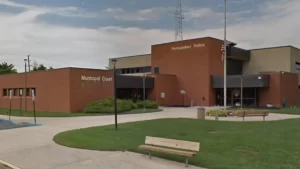3rd Circuit Courts in Maryland: An Overview
Introduction
The 3rd Circuit Courts in Maryland are a vital component of the state’s justice system, responsible for handling a wide range of criminal, civil, family, and juvenile cases. These courts are known for their speed, efficiency, and expertise, and they serve as a model for other courts across the country.
In this article, we will provide a comprehensive overview of the 3rd Circuit Courts in Maryland, including their history, jurisdiction, structure, processes, advantages, challenges, reforms, representation, outcomes, and public access.
Baltimore County Circuit Court
Harford County Circuit Court
History of 3rd Circuit Courts in Maryland
The 3rd Circuit Courts in Maryland have a rich history dating back to the early days of the state. The first 3rd Circuit Courts were established in the late 1700s and have undergone numerous changes and reforms over the centuries.
Throughout this history, the 3rd Circuit Courts have remained a critical part of the justice system, serving as a venue for citizens to resolve disputes, hold criminals accountable, and protect their rights and interests.
Jurisdiction of 3rd Circuit Courts in Maryland
The jurisdiction of the 3rd Circuit Courts in Maryland encompasses a wide range of cases, including criminal, civil, family, and juvenile matters.
In criminal cases, the 3rd Circuit Courts have the authority to hear and decide on a variety of offences, from minor misdemeanours to serious felonies.
In civil cases, the 3rd Circuit Courts handle disputes between individuals or organizations, including contract disputes, personal injury claims, and property disputes.
The 3rd Circuit Courts also play a vital role in resolving family law issues, such as divorce, child custody, and adoption.
Finally, the 3rd Circuit Courts in Maryland are responsible for handling juvenile cases, including delinquency and status offenses, and providing support and resources for young people and their families.
The Structure of 3rd Circuit Courts in Maryland
The 3rd Circuit Courts in Maryland are comprised of a network of courts, each with its own judges and court personnel. The number of courts and judges may vary depending on the specific needs of each region, but the goal is to ensure that all citizens have access to a fair and efficient justice system.
The types of cases handled by the 3rd Circuit Courts in Maryland are diverse and include criminal, civil, family, and juvenile matters. Each court is responsible for ensuring that all cases are handled in a timely and impartial manner, with the goal of achieving just outcomes for all parties involved.
The judges and court personnel who work in the 3rd Circuit Courts are experts in the law and are committed to providing fair and impartial justice. They work closely with litigants, lawyers, and other stakeholders to ensure that each case is handled with the utmost care and attention.
The Process of Filing a Case in 3rd Circuit Courts in Maryland
Filing a case in the 3rd Circuit Courts in Maryland is a straightforward process, but it is important to understand the requirements and timeframes involved.
To file a criminal, civil, family, or juvenile case, individuals must complete the appropriate forms and submit them to the court along with any required supporting documentation.
Once a case is filed, it will typically be assigned to a judge, who will then set a hearing date and determine the next steps in the process. The time it takes for a case to be heard will vary depending on the specific circumstances, but the 3rd Circuit Courts are known for their speed and efficiency in resolving cases.
Advantages of Filing a Case in 3rd Circuit Courts in Maryland
There are several advantages to filing a case in the 3rd Circuit Courts in Maryland, including speed and efficiency, access to expert judges and personnel, and support services for litigants.
The 3rd Circuit Courts have a well-deserved reputation for being fast and efficient, with a streamlined process that helps to resolve cases quickly. This is especially important in criminal and family law cases, where time is of the essence.
In addition to speed and efficiency, the 3rd Circuit Courts in Maryland are staffed by expert judges and court personnel who are committed to providing fair and impartial justice. This gives litigants the confidence that their case will be handled with the utmost care and attention.
Finally, the 3rd Circuit Courts in Maryland offer a variety of support services for litigants, including legal aid and pro bono resources, as well as public outreach programs designed to educate and engage the community.
Challenges Facing 3rd Circuit Courts in Maryland
Despite their many strengths, the 3rd Circuit Courts in Maryland face a number of challenges, including a backlog of cases, funding and staffing constraints, and the complexity of the cases they handle.
To address these challenges, the 3rd Circuit Courts in Maryland are constantly looking for ways to improve and streamline their processes. This has led to a number of reforms and innovations in recent years, including the use of technology to improve efficiency and the implementation of new processes to reduce backlogs and simplify complex cases.
One major area of focus has been the use of alternative dispute resolution (ADR) techniques, such as mediation and arbitration, to resolve disputes more quickly and efficiently. This has been particularly successful in resolving civil cases, where the parties are often able to reach a mutually-agreeable solution without the need for a full trial.
Another important area of reform has been the use of technology, such as online filing and video conferencing, to make the process of filing a case and attending hearings more convenient and accessible. This has helped to improve efficiency and reduce the backlog of cases, while also making the courts more accessible to litigants who may not be able to travel to the courthouse in person.
Representation in 3rd Circuit Courts in Maryland
Individuals who are involved in a case in the 3rd Circuit Courts in Maryland have the option to hire a lawyer or represent themselves. Hiring a lawyer can be especially beneficial in complex cases, where legal expertise is necessary to achieve a favorable outcome.
For those who cannot afford to hire a lawyer, there are a number of pro bono and legal aid resources available, including public defender offices and legal aid societies. These organizations provide free or low-cost legal services to eligible individuals, helping to ensure that everyone has access to the justice system.
Outcomes of Cases in 3rd Circuit Courts in Maryland
The outcomes of cases in the 3rd Circuit Courts in Maryland are diverse and will depend on the specific circumstances of each case. However, the courts are known for their expertise and commitment to achieving just outcomes, and they have a strong record of success in resolving a wide range of cases.
The impact of these cases on litigants and society is also significant, with many cases serving to uphold the rights of individuals, hold criminals accountable, and resolve disputes in a fair and efficient manner.
Public Access to 3rd Circuit Courts in Maryland
The 3rd Circuit Courts in Maryland are committed to being accessible and transparent to the public, and there are a number of ways for individuals to engage with the courts.
Members of the public are welcome to attend hearings and trials, and they can obtain court records and documents by making a request to the court. Additionally, the 3rd Circuit Courts offer a variety of public outreach programs, including educational seminars and community events, designed to educate and engage the community.
Conclusion
The 3rd Circuit Courts in Maryland play a critical role in the state’s justice system, handling a wide range of criminal, civil, family, and juvenile cases. With their expertise, efficiency, and commitment to achieving just outcomes, the 3rd Circuit Courts serve as a model for other courts across the country.
Whether you are a litigant, a member of the legal community, or simply interested in the workings of the justice system, the 3rd Circuit Courts in Maryland are worth exploring and learning more about.
FAQs
- What are the 3rd Circuit Courts in Maryland? The 3rd Circuit Courts in Maryland are a network of courts responsible for handling criminal, civil, family, and juvenile cases.
- What types of cases are handled by the 3rd Circuit Courts in Maryland? The 3rd Circuit Courts in Maryland handle a wide range of cases, including criminal, civil, family, and juvenile matters.
- How can I file a case in the 3rd Circuit Courts in Maryland? To file a case in the 3rd Circuit Courts in Maryland, individuals must complete the appropriate forms and submit them to the court along with any required supporting documentation. The process for filing a case will vary depending on the type of case, but the court will provide guidance and support to ensure that the process is as smooth and efficient as possible.
- What are the advantages and challenges of filing a case in the 3rd Circuit Courts in Maryland? The advantages of filing a case in the 3rd Circuit Courts in Maryland include speed and efficiency, access to expert judges and personnel, and support services for litigants. However, there are also challenges, such as a backlog of cases, funding and staffing constraints, and the complexity of the cases. The 3rd Circuit Courts are constantly working to address these challenges and improve the overall experience for litigants.
- How can I get involved with the 3rd Circuit Courts in Maryland as a member of the public? There are a number of ways for individuals to get involved with the 3rd Circuit Courts in Maryland, including attending hearings and trials, obtaining court records and documents, and participating in public outreach programs. The 3rd Circuit Courts are committed to being transparent and accessible, and they welcome the participation and engagement of the community.





